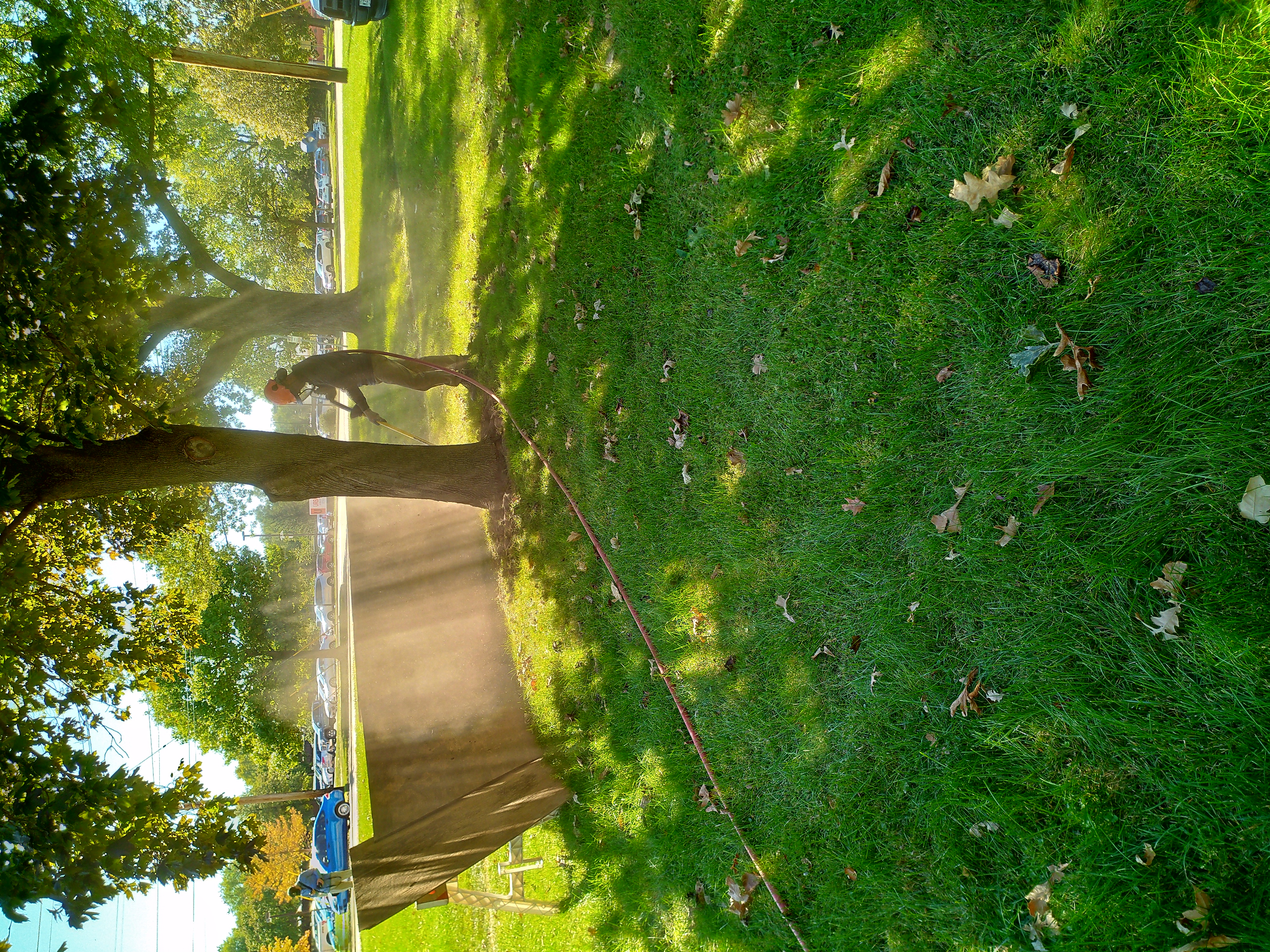
We are stuck with the trees planted by those who came before us. At least I am at my house. Mostly because they are so expensive to cut down. One species I am left dealing with is Norway maple (Acer platinoides).
Am I referring to the maple with purple leaves? Yes, that maple. The original species of Norway maple has green leaves, but it’s purple-leafed cultivar ‘Crimson King’ was so popular around the end of the 20th Century, that many people assumed Norway maple was only purple.
In my yard, I am stuck with two Crimson King Norway maples. Norway maples have lots of problems. And though I am not a fan of this tree, it is common for me to be helping others troubleshoot their Norway maple issues. Let’s review some reasons Norway maple is on my “do not plant list.”
It has a lousy root system
While not entirely the tree’s fault, genetics does deserve some blame. Norway maple is after all a maple. Maple trees are notorious for surface roots creating bumpy lawns and busted patios. But what often leads to a Norway maple’s demise are girdling roots. When I inspect an ailing Norway maple, these circling roots that slowly strangle the trunk are almost expected. Often the problem of girdling roots begins in the nursery as the roots circle in their plastic pots. In addition to Norway maples, it is common to see hybrid maples (red maple crossed with silver maple) with girdling roots. These roots can be pruned off at planting. For established trees, often a certified arborist is recommended to carefully excavate soil and remove girdling roots.
Scorched leaves
Norway maple is native to the northern climate of Europe, not the sun-blasted prairies of Illinois. It is quite common for Norway maple leaves to suffer from sun scorch during hot, dry weather. Crispy leaves will fall from the tree which crunch into a thousand pieces in your hand. While sun scorch won’t kill Norway maple it is a sign this tree does not like our climate. This environmental stress leaves this tree susceptible to further problems.
Diseased leaves
A disease that seems to pop up every year for Norway maple is a foliar fungal pathogen called anthracnose. This disease infects leaves during cool wet spring weather. The tree will drop the diseased leaves and flush out with new growth. A healthy tree is unaffected by anthracnose, and most Norway maples handle the disease without issue. Can I use this as an excuse not to plant Norway maple? Today I am!
Diseased trees
Second to girdling roots, a huge issue I encounter with Norway maple is a disease that infects the entire tree called verticillium wilt. This soil-borne fungus frequently appears on Norway maple even though many tree species are susceptible to infection. Why this seems to be a chronic issue for Norway maple likely ties back to stresses caused by its poor adaptability to the Illinois climate. This disease infects the root system which causes sections of the canopy to die over time. Very often this disease is fatal for Norway maple.
A species of concern
My last reason not to plant Norway maple is this plant is aggressively invading our Illinois forests. I routinely see and pull Norway maple seedlings in the woods behind my house. Spotting them can be tricky as the progeny from the purple-leafed maples revert to green leaves.
Now you know some of the reasons why Norway maple is on my “do not plant” list. If you are a fan of these purple monsters, rest assured I will still assist you in determining what’s wrong with your Norway maple, but I don’t have to like it!
Good Growing Tip of the Week: Norway maple leaves look similar to sugar maple leaves. Our Canadian neighbors have accidentally put the Norway maple leaf on a few types of currency. The easiest way to identify a Norway maple is to break off a leaf and look for white sap oozing from the stem.
Sign up for our emails! Want to get notified when new Good Growing posts are available? SIGN ME UP
Give us feedback! How helpful was this information (click one): Very helpful | Somewhat helpful | Not very helpful
MEET THE AUTHOR
Chris Enroth is a horticulture educator with University of Illinois Extension, serving Henderson, McDonough, Knox, and Warren counties since 2012. Chris provides horticulture programming with an emphasis on the home gardener, landscape maintenance personnel, and commercial landscapers. Additional responsibilities include coordinating local county Master Gardener and Master Naturalist volunteers - providing their training, continuing education, advanced training, seasonal events, and organizing community outreach programs for horticulture and conservation assistance/education. In his spare time, Chris enjoys the outdoors, lounging in the garden among the flowers (weeds to most).




